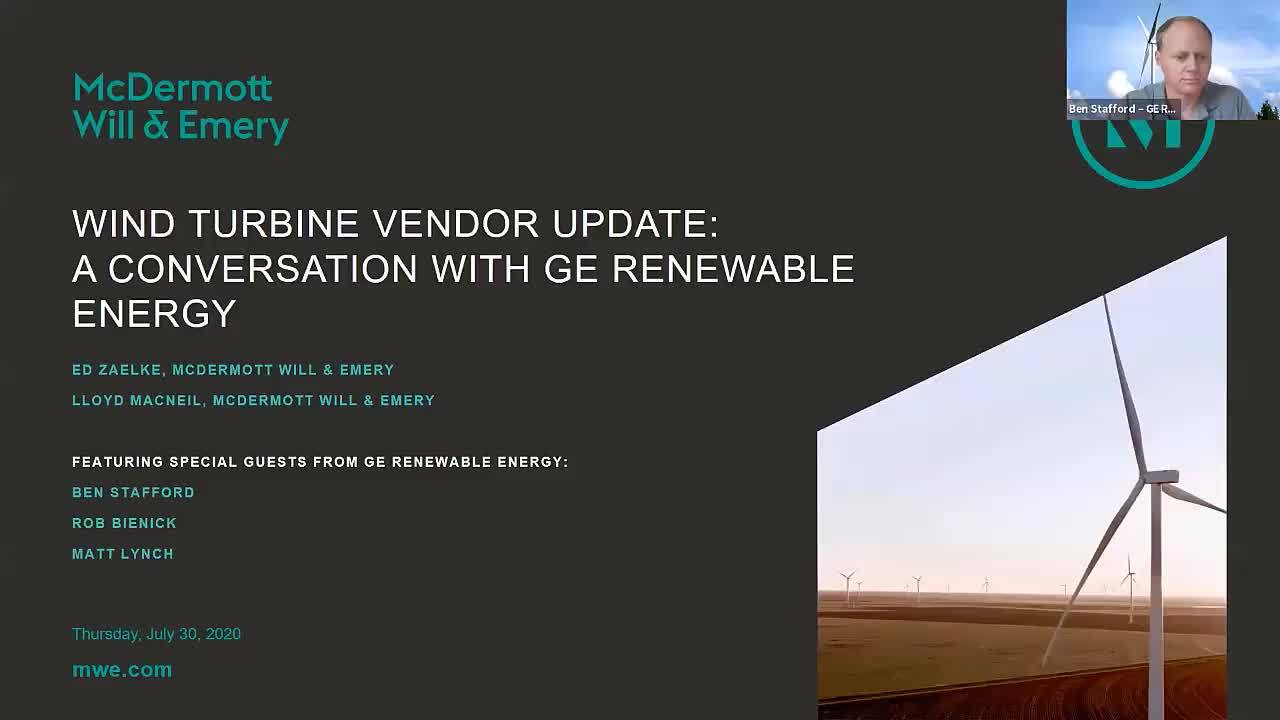
McDermott hosted GE Renewable Energy North America Services Sales Leader Ben Stafford, Commercial Director of Onshore Wind for the North Region Rob Bienick and Commercial Director of Onshore Wind for the West Region Matt Lynch on July 30 for a discussion about COVID-19’s impact to turbine supply chain and construction, the effects of the Production Tax Credit (PTC) safe harbor extension, and how GE is preparing for 2021 and beyond.
Below are key takeaways from this week’s webinar.
1. COVID-19 continues to impact both supply chain and construction – requiring more communication with customers, subcontractors, and within GE, but products continue to be manufactured, delivered, installed, and maintained.
2. The large wind project pipeline in the United States (even prior to the PTC extension) shows that there remains great optimism for the wind industry, despite the current PTC phase-out schedule.
3. The repowering market for wind is growing, providing many benefits including renewed PTCs, increased energy yield, increased reliability, lowered maintenance cost, and optimization of existing site infrastructure over greenfield development.
4. The trend toward longer blades continues, but logistics remain the largest hurdle to wider deployment.
5. Service agreements are trending towards longer terms with greater flexibility to meet customer needs, including opportunities to align interests with revenue and risk sharing terms.
6. GE is available to support both new and repowering projects with available safe-harbor equipment.
To begin receiving Energy updates, including invitations to the webinar series, please click here.
read more

 Subscribe
Subscribe
